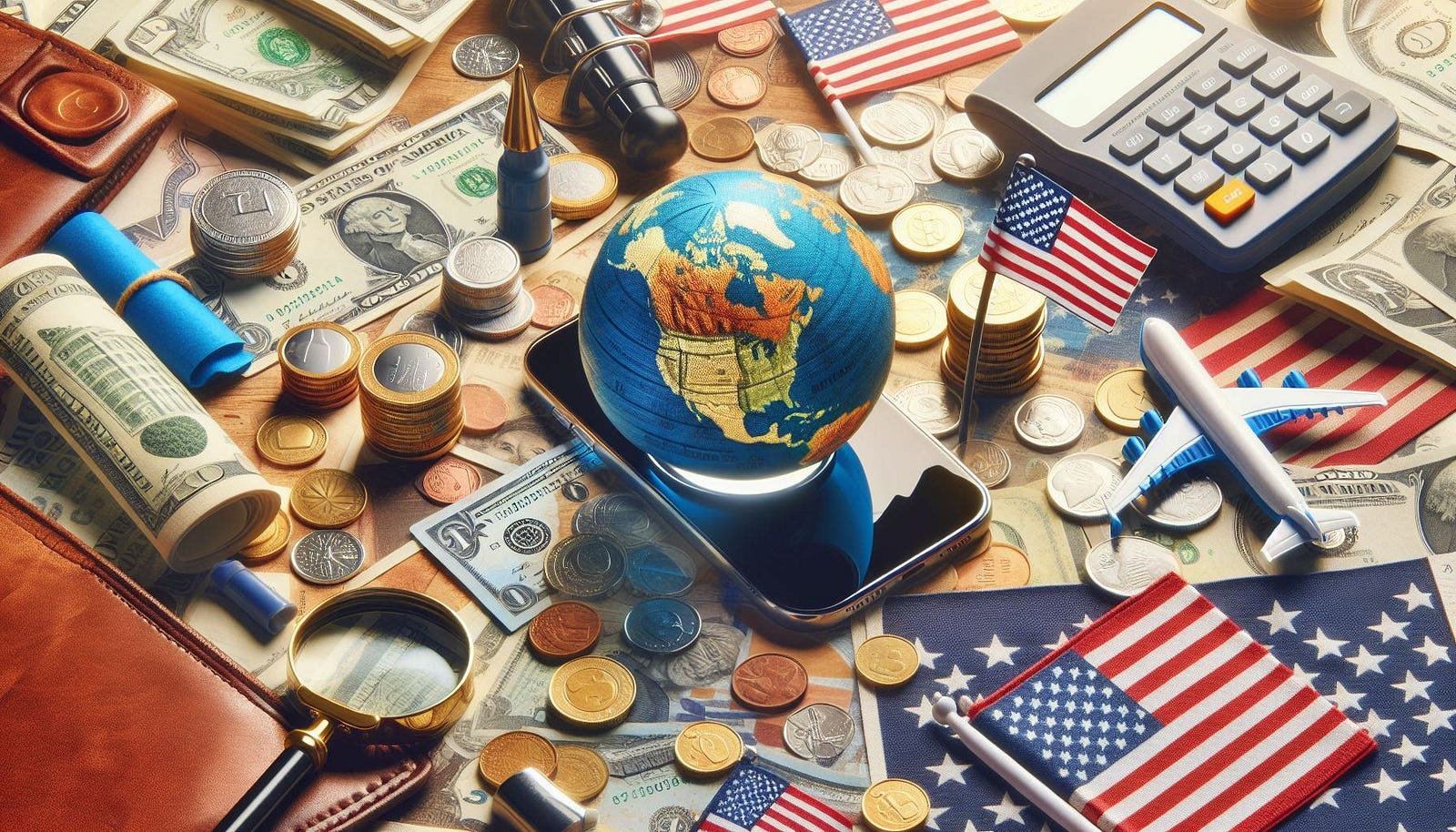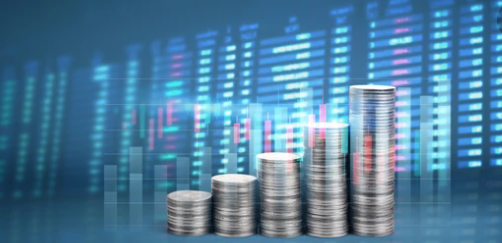Swipe, Tap, Click: Navigating the evolving US Payment Landscape

Cash is slowly becoming a relic of the past. As technology evolves, so do our payment preferences. But with a plethora of options available, navigating the world of payments can be tricky. Fear not, fellow consumers!
This blog will guide you through the most widely accepted payment methods in the US for 2024.
In the ever-evolving landscape of commerce, payment methods play a pivotal role in shaping how transactions occur. With technological advancements and shifting consumer preferences, the United States has witnessed significant changes in the payment ecosystem. As we journey further into 2024, it’s essential to take stock of the payment methods that are most widely accepted across the United States.
Let’s delve into the primary methods dominating the payments ecosystem.
The old guard holds strong:
Credit and Debit Cards:
Credit and debit cards have long been the cornerstone of modern transactions in the US, offering convenience, security, and widespread acceptance. Whether it’s swiping, dipping, or tapping, these plastic cards facilitate seamless payments in brick-and-mortar stores and online platforms alike. In 2024, major card networks like Visa, Mastercard, American Express, and Discover continue to dominate the market, providing consumers with various perks such as cashback rewards, travel benefits, and fraud protection. With the integration of EMV chip technology and contactless payment options, credit and debit cards remain a preferred choice for millions of Americans.
Still the reigning champion, credit cards offer convenience, security features, and often, reward points. A 2024 study by the Federal Reserve indicates a whopping 75% of US businesses accept credit cards, making them a universally safe bet. Credit cards continue to hold sway, especially among millennials (ages 26 to 41). With credit cards, consumers can make purchases and pay later, often with added benefits like rewards points, cashback, and purchase protection. The flexibility and widespread acceptance of credit cards make them a staple in the US payment landscape.
Following closely behind are debit cards, boasting similar acceptance rates (around 68%) and the added benefit of directly drawing funds from your checking account. They offer a responsible way to manage spending and avoid credit card debt. Also, they offer convenience, security, and ease of use. Whether it’s swiping at a point-of-sale terminal or making online purchases, consumers appreciate the direct access to their bank accounts. For the younger generation (Gen Z), debit cards are the go-to choice.
The Digital Revolution:
Mobile wallets:
The rise of smartphones has paved the way for the widespread adoption of mobile wallets, revolutionizing the way we pay on the go. Platforms such as Apple Pay, Google Pay, and Samsung Pay allow users to digitize their credit and debit cards, enabling swift and secure transactions through Near Field Communication (NFC) technology. With an estimated 25% of e-commerce transactions utilizing digital wallets like Apple Pay, Google Pay, and Samsung Pay, their popularity is soaring. Mobile wallets offer added convenience by consolidating payment methods, loyalty cards, and boarding passes into one app, simplifying the checkout process for consumers. Furthermore, the emphasis on biometric authentication and tokenization enhances security, instilling confidence in users who prioritize privacy and fraud prevention.
ACH payments:
Also known as electronic checks, ACH payments facilitate direct transfers between bank accounts. While not as common for in-person transactions, they’re widely accepted for online payments and bill payments, with a 62% business acceptance rate according to industry reports.
Digital wallets and Peer-to-Peer (P2P) payment apps:
Beyond traditional banking channels, digital wallets and P2P payment apps have emerged as popular alternatives for transferring funds and splitting expenses among peers. Platforms like PayPal, Venmo, Cash App, and Zelle facilitate seamless money transfers between individuals, eliminating the need for cash or checks. With user-friendly interfaces and instant transaction processing, these apps cater to the fast-paced lifestyle of modern consumers who value convenience and immediacy. Moreover, the integration of social features and customizable payment requests adds a layer of personalization, fostering a sense of community among users.
Cryptocurrencies:
While still considered a niche payment method, cryptocurrencies have gained traction as an alternative investment and medium of exchange in recent years. Bitcoin, Ethereum, and other digital currencies offer decentralization, security, and borderless transactions, appealing to individuals seeking financial sovereignty and privacy. In 2024, an increasing number of merchants and online platforms accept cryptocurrencies, facilitated by payment processors and cryptocurrency wallets. Despite regulatory uncertainties and price volatility, cryptocurrencies continue to capture the imagination of tech-savvy consumers and investors looking to diversify their financial portfolios.
Emerging Trends:
Buy Now, Pay Later (BNPL):
Buy Now, Pay Later (BNPL) services have gained significant traction in the United States in recent years, particularly among younger consumers and online shoppers. These services offer an alternative to traditional credit cards and installment plans by allowing consumers to make purchases and spread payments over time without accruing interest. This financing option allows consumers to split purchases into smaller installments. While relatively new, BNPL services like Klarna and Afterpay are rapidly gaining traction, accounting for an estimated 10% of e-commerce transactions in the US.
Key Players: Several BNPL providers have established a strong presence in the U.S. market. Some of the prominent players include:
- Afterpay: An Australian-based company that allows consumers to split their purchases into four equal installments, with payments due every two weeks.
- Klarna: A Swedish payment service provider that offers both installment payments and the ability to pay later after receiving the goods.
- Affirm: A U.S.-based financial technology company that offers installment loans for online purchases, allowing consumers to split their payments over a fixed period.
- PayPal Pay in 4: PayPal’s installment payment solution that enables customers to split purchases into four interest-free payments, paid every two weeks.
BNPL services have been widely adopted by online merchants across various industries, including fashion, beauty, electronics, and home goods. Many retailers offer BNPL as a payment option at checkout, attracting customers seeking flexibility and convenience.
Overall, BNPL services have emerged as a popular and disruptive force in the U.S. retail landscape, offering consumers greater flexibility and convenience in how they pay for purchases. However, as the industry continues to evolve, it will be important for regulators, merchants, and BNPL providers to collaborate on establishing responsible practices that safeguard consumer interests and promote financial well-being.
A Note on Cash:
Cash is the physical currency – including bills and coins – that can be used to buy goods and services. In the US, that’s US dollars (USD), of course. Despite the increasing popularity of contactless and electronic payment methods like credit and debit cards and e-wallets, cash usage still remains widespread throughout the US. In fact, data shows that 30% of US consumers prefer to use cash, with around 25 to 30% of all transactions being made with physical currency.
Cash usage is undeniably declining. The Federal Reserve reports only 60% of businesses currently accept cash. While it’s not entirely obsolete, it’s wise to carry alternative payment methods for a smoother transaction experience.
Checks (Yes, Checks!)
(Note: Cheque is the British English spelling for the document used for making a payment, whereas American English uses check.)
While checks may seem old-fashioned, they still find favor with the baby boomer generation (ages 57 to 75). Some businesses and individuals prefer the reliability and paper trail that checks provide. Although their usage has declined, checks remain a viable payment method, especially for larger transactions.
In conclusion, the payment landscape in the United States is marked by diversity and innovation, with credit and debit cards, mobile wallets, digital wallets, P2P payment apps, and cryptocurrencies shaping the way we transact in 2024. While credit and debit cards remain dominant, digital wallets and BNPL are gaining significant ground. As technology continues to evolve and consumer preferences evolve, businesses must adapt and embrace multiple payment methods to cater to the needs of their clientele. By offering a seamless and secure payment experience, merchants can enhance customer satisfaction and drive growth in an increasingly digital economy. Catering to diverse payment preferences ensures a seamless customer experience. Whether you’re a brick-and-mortar store or an e-commerce platform, offering a variety of payment options is essential for success in the dynamic US market.
Overall, online payment trends in the U.S. reflected a dynamic and rapidly evolving landscape shaped by technological innovation, shifting consumer behaviors, and market forces. As digital payments continued to gain prominence, businesses and payment providers focused on enhancing security, improving user experiences, and expanding payment options to meet the diverse needs of consumers. Looking ahead, the continued convergence of technology, finance, and commerce is expected to drive further innovation and transformation in the online payment ecosystem.
That’s all for today. Remember, the most suitable payment method depends on your individual needs and preferences. So, stay informed, embrace new technologies, and happy shopping (or paying)!
Please engage with my article by highlighting something you found interesting and commenting. Come back soon.
Thank you so much for taking the time to read my article! Appreciate the continued support!
If you have a related query, feel free to let me know in the comments below.
Be part of my community by subscribing /following my blog for more industry content and discussions.
Also, share the article with people, you think might be interested in reading it.
It would mean a lot to me and it helps other people see the story.
If you found any value in this article, also, throw me some Medium love!
FYI: this article also appeared on my medium blog post.
I look forward to your response!
Thanks and Regards,
Neha Sahay




0 Comments